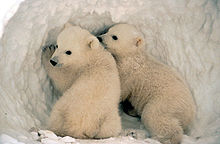Fur

Fur is the hair of mammals. Different species may have quite different styles of hair, making them more or less suitable to the fur trade, but many are as follows:
Fur usually consists of two main layers:
- Down hair (known also as undercoat or ground hair) — the bottom layer. They are wool hairs, usually wavy or curly without straight portions or sharp points; down hairs tend to be shorter, flat, curly, and more numerous than the top layer. Its principal function is thermoregulation; it keeps a layer of dry air next to the skin and repels water, thus providing thermal insulation.
- Guard hair — the top layer is longer, coarser, nearly straight shafts of hair. This protrudes through the down hair layer. The top ends of the guard hairs are visible. This top layer displays the most colour and gloss, including coat patterns adapted to display or camouflage. It is also adapted to shedding water and blocking sunlight, protecting the undercoat and skin from external factors such as rain and ultraviolet radiation. Many animals, such as domestic cats, erect their guard hairs as part of their threat display when agitated.
Many large mammals have little hair, because their body mass radiates proportionately less heat (elephants, rhinoceros, hippopotamus). When elephants lived in arctic conditions they did have fur (woolly mammoths).
Marine mammals usually have little or no fur: the fur would become waterlogged. They have a layer of fat (blubber) underneath their skin. A special case is the naked mole-rat, whose hairlessness is probably an adaptation to their underground life-style.
Wikimedia Commons has media related to Fur.
